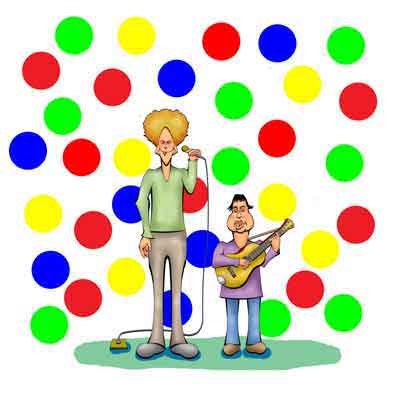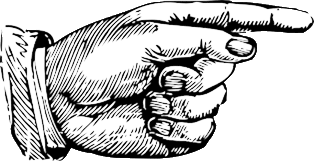 |
|
|
 (Click image to zoom in and out.) |
 |
The fence which has been completed has been constructed of tongue and groove lumber. | |
|
 |
In a narrow groove were Bethlehem, Republic, and Youngstown Sheet and Tube. | |
|
 |
To get anywhere you have to be in shape, and in the groove, and in the right frame of mined. | |
|
 |
Snookum Russell and His Orchestra ... The Groovy Man with the Groovy Band | |
|
 |
Latest hit tune is Don Redman's "Down, Down, Down." And we mean to tell you -- it's groovy! | |
|
 |
Hey now! Behave yourselves, because we got our eyes on all of you crew cuts and groovy kids. | |
|
We see, then, that a quick perusal of contemporary publications does support the contention that the word "groovy" - the quintessential and even stereotypical "hippie" word of approbation - emerged sometime during the 1930's to describe popular music, chiefly jazz, and was finding its way into print by the early 1940's. And by the mid-1950's "groovy" was applied in a more or less generic manner to young people who were putting on the style.
Within the same time frame the closely related phrase "in the groove" came to refer to someone who had developed an ability to perform some task reliably and with skill. However the term was used long before in a more literal sense in fields such as carpentry, metallurgy, or other crafts.
 |
As to the air, it produces its effects both in the groove and at the day; pyrites vitriolising not only in veins laid bare but also in firm, close veinstone, if only the smallest fissure happen to give entrance to this penetrating, insinuating body and lastly in mineral and pyrites heap-work; which is either shot in trunks or otherwise remains lying in the groove | |
|
Peak use of "in the groove" was the early 1890's and became less frequent until the 1920's. Then it saw a quick upsurge when it was picked up by the jazz and pop musicians.
Research as to exactly when "groovy" really meant groovy is befuddled by early quotes such as:
 |
For a groovy parent trains a groovy child, and the groovy child must be father of a groovy man; and what a few generations of groovy men can do is a marvel to think of. | |
|
Yes, that's 1865 not 1965.
Even in this seemingly modernistic usage, the word was actually applied in fairly straightforward manner - referring to the appearance of something with grooves or about something contained in a groove. Early on the word was adopted for figurative allusion such as describing someone whose way of doing things is like being stuck in a groove. And in the article from which the above quote was extracted, the author cautioned against being stuck in a groove as it leads to too rigid thinking.
Although the article was written in somewhat obscure mid-19th century English, later writings left no doubt as to the meaning of someone who was groovy.
 |
Among photographers are to be found, as among all other classes, plenty of "groovy" men. (This particular adjective has not yet come within the ken of the dictionary compiler, but it is such a good and expressive word for the man who never moves out of the particular slot into which fate has dropped him, that its admission into the vocabulary is merely a matter of time.) | |
|
If it's hard to find when "groovy" became groovy, it's even harder to find someone who actually used it. After the end of the '60's, a student at a major university snorted how no word in English ever had such a transient existence. When another student - attending the same school at the same time - used the word frequently it was only in a sarcastic and satirical manner.
But for those who remember the 60's1, the word "groovy" was solidified into the English language by Simon and Garfunkel's song "The 59th Street Bridge Song" with the identifying phrase enclosed in parentheses. Ironically it was not Art and Paul's rendering that brought the tune to America's collective consciousness. That was the "cover" version by the soft-rock and (dare we say it?) "easy-listening" group, Harpers Bizarre [sic]. Backed by what sounds like a chamber ensemble - with a somewhat honking bassoon featured prominently - the record was a hit although it didn't quite crack the top ten. Art and Paul's rendering is found on the fourth track on their third album Parsley, Sage, Rosemary and Thyme. Although the album sold well, the track did not make any real dint into the charts as a single. But today that's the version that you'll hear.
Footnote
Of course, the usual saying is if you remember the 60's you weren't really there.
Throughout all the 4 billion years that the earth has been in existence, the word "groovy" reached peak usage in 1971. At that time Simon and Garfunkel were one of the top rock groups in the world. The irony was that only a few years before the two men had decided that it wasn't in their stars to be famous musicians and had gone their separate ways. After all, when it was released in 1964, their debut album "Wednesday Morning, 3 A. M." had been a massive flop.
But some DJ's in the Northeast had begun playing the track "The Sound of Silence" on the radio. So an executive at Columbia, the company that had produced the album, took the original song which had only Paul's guitar playing as the accompaniment, and added electric guitar and drums. Neither Paul nor Art knew about the re-dubbing. They soon learned about it, though, particularly when the song reached Billboard's #1. So they decided maybe they should give it another go. After all, everything was looking groovy.
References and Further Reading
"For Simon and Garfunkel All is Groovy", Josh Greenfeld, The New York Times, October, 13, 1968, p. 42.
"Grooves", The Saturday Review of Politics, Literature, Science and Art, Volume 17, p. 42, January 9, 1865.
"Feelin' Groovy: Can Anybody Say It With a Straight Face?", Cullen Murphy, The Good Word, Slate, February 11, 1993.
Chronically America, Library of Congress.
"groovy", Ngram Viewer.